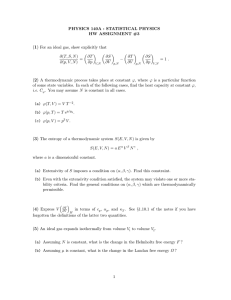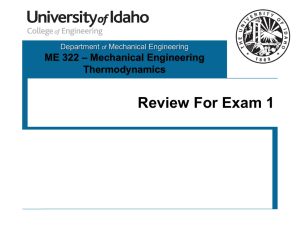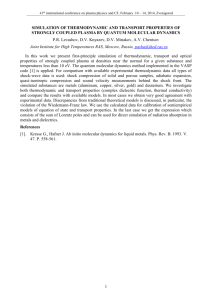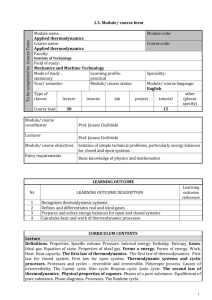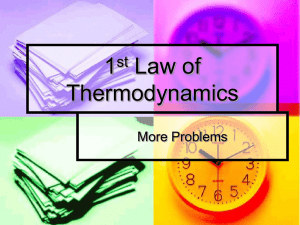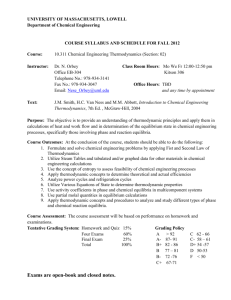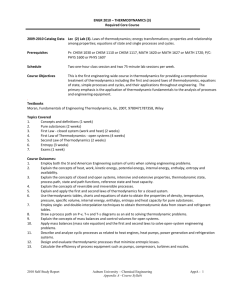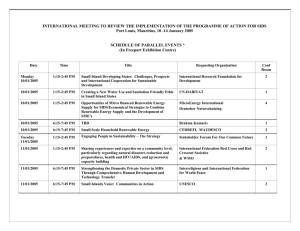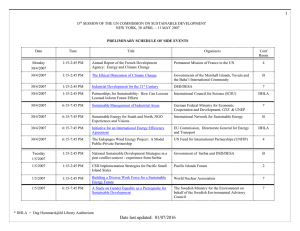Chapter 15 The Laws of Thermodynamics 15-1 The First Law of Thermodynamics
advertisement
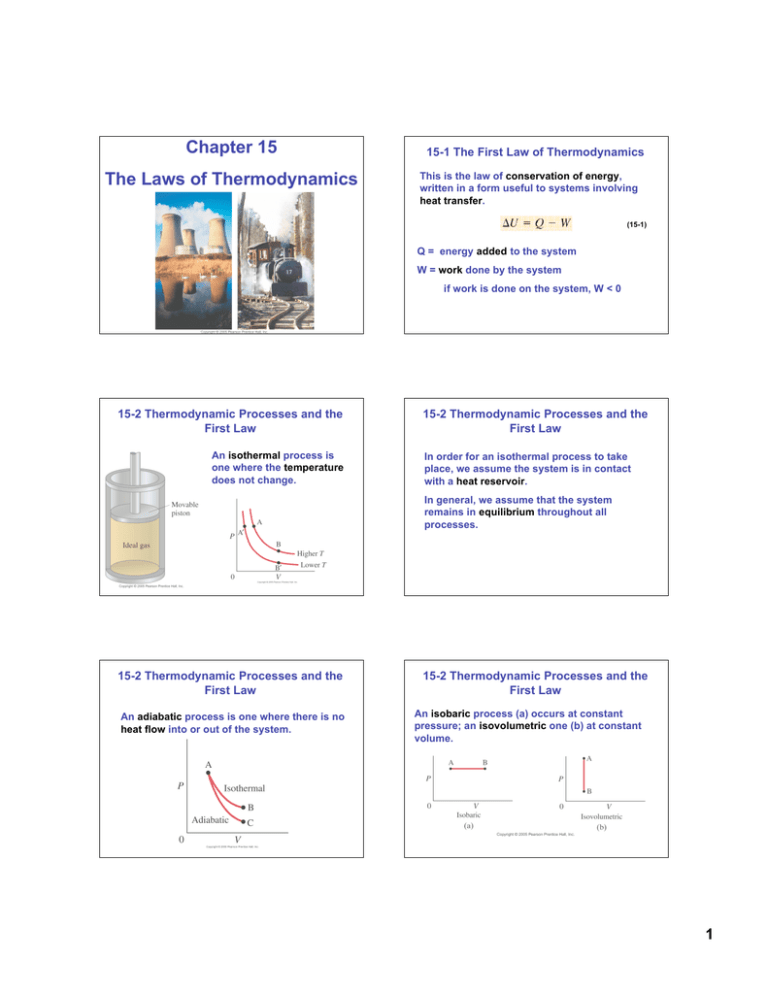
Chapter 15 The Laws of Thermodynamics 15-1 The First Law of Thermodynamics This is the law of conservation of energy, written in a form useful to systems involving heat transfer. (15-1) Q = energy added to the system W = work done by the system if work is done on the system, W < 0 15-2 Thermodynamic Processes and the First Law An isothermal process is one where the temperature does not change. 15-2 Thermodynamic Processes and the First Law In order for an isothermal process to take place, we assume the system is in contact with a heat reservoir. In general, we assume that the system remains in equilibrium throughout all processes. 15-2 Thermodynamic Processes and the First Law An adiabatic process is one where there is no heat flow into or out of the system. 15-2 Thermodynamic Processes and the First Law An isobaric process (a) occurs at constant pressure; an isovolumetric one (b) at constant volume. 1 15-2 Thermodynamic Processes and the First Law If the pressure is constant, the work done is the pressure multiplied by the change in volume: 15-2 Thermodynamic Processes and the First Law For processes where the pressure varies, the work done is the area under the P-V curve. (15-3) In an isometric process, the volume does not change, so the work done is zero. 15-2 Thermodynamic Processes and the First Law Ch 15 - Problem 1 • An ideal gas expands isothermally, performing 3.40 x 103 J of work in the process. Calculate (a) the change in internal energy of the gas, and (b) the heat absorbed during this expansion. Ch 15: Problem 3 • One liter of air is cooled at constant pressure until its volume is halved, and then it is allowed to expand isothermally back to its original volume. Draw the process on a PV diagram. Ch 15: Problem 6 • The pressure in an ideal gas is cut in half slowly, while being kept in a container with rigid walls. In the process, 265 kJ of heat left the gas. (a) How much work was done during this process? (b) What was the change in internal energy of the gas during this process? 2 15-3 Human Metabolism and the First Law If we apply the first law of thermodynamics to the human body: 15-3 Human Metabolism and the First Law The metabolic rate is the rate at which internal energy is transformed in the body. we know that the body can do work. If the internal energy is not to drop, there must be energy coming in. It isn’t in the form of heat; the body loses heat rather than absorbing it. Rather, it is the chemical potential energy stored in foods. Ch 15: Problem 15 • Calculate the average metabolic rate of a person who sleeps 8.0 h, sits at a desk 8.0h, engages in light activity 4.0h, watches television 2.0h, plays tennis 1.5h, and runs 0.5h daily. 3
